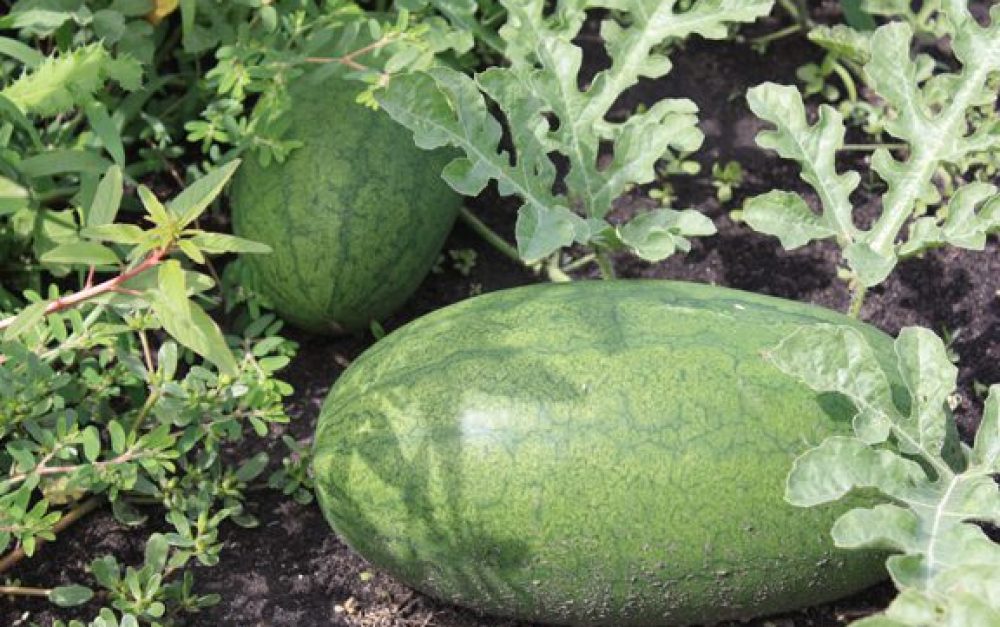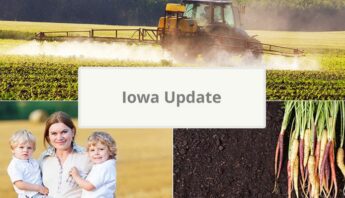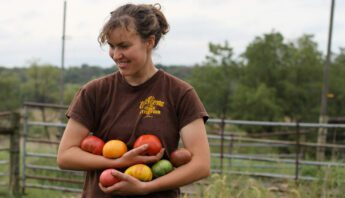The need for local food resources is a topic I find myself writing about frequently. As a farmer who maintains a small-scale, diversified operation, I often share my fear that farms like mine cannot be successful without community support.
The need for local food resources is a topic I find myself writing about frequently. As a farmer who maintains a small-scale, diversified operation, I often share my fear that farms like mine cannot be successful without community support. Sometimes, I give you a look into what it has been like being a producer of food for local consumption. And I always wish we would value our food the way we should.
This time, I thought I would take a different approach and advance an idea.
What’s the potential?
Our farm in Iowa occupies about 15 acres of land and is surrounded by hundreds of acres of corn and soybean field production (not ours, of course). On that 15-acre plot, we have grown as much as five acres of uncovered vegetables and two high tunnels worth of covered vegetable crops. There are some fruit trees and raspberry/blackberry canes to go along with wild plum and mulberry trees. In addition to the produce, we also maintain flocks of chickens and turkeys.
And, before you think we’re milking the land for every drop it is worth, we recognize that we have to pay the rent by maintaining the balance. We nourish the soil, we maintain untilled and wild areas, and we feed the pollinators.
It is safe to say that we’ve never reached the full potential of food production on our farm — for a whole host of reasons we can discuss another day. But, even with that caveat, we’ve had multiple seasons where we were able to produce 12.5 tons of produce. Additionally, we harvest almost two tons of eggs each year and two to three tons of poultry.
Seventeen tons of food in one year. On 15 acres. While maintaining a diverse habitat and soil health.
How much space do we need?
This question can be answered in so many ways, but I will start by approaching it from my perspective — the small-scale farmer looking to produce a diverse set of products.
We just completed our 18th year farming — so I think we have enough experience, with plenty of failures and successes, to make a few educated guesses. First, I’ve come to the conclusion that this type of farm would benefit from being sized at around fifty acres of land. Second, these small-scale, diverse farms need to have consistent contact with two to four other farms of a similar scale — preferably close enough where resources could be shared. And third, the uber-diverse CSA model on a single farm is too inefficient if we’re worried about volume of production, just as a monocrop (single crop in a field) system is too restrictive to provide the natural insurance diversity gives us and the benefits of nature’s services for production.
The other way to answer the question about how much space we need is to ask how much food we need over the course of one year. At our peak, the Genuine Faux Farm supported 150 families, which totaled somewhere in the neighborhood of 500 people. Did these people rely on us for all of their food needs? Of course not. But, it still gives us a measure of exactly how well local production could do if we gave it a real chance to succeed.
The beginnings of an idea
It seems that we are often stymied by the overwhelming size of the food system problem. And, the solutions often seem too big for us to actually put the energy into making them happen. So, here is a thought that might be “bite-sized” enough for us to consider in my home state.
There are approximately 26.2 million acres used as cropland in Iowa and another 1.3 million that serve as pasture land. What would happen if we dedicated just three, 50-acre parcels of fertile ground per county to some small-scale, diversified farms that were supported collectively? This would require just under 15,000 acres, which is approximately .0005% of the crop and pasture land in the state. That’s not even 1% of 1% of the farm land here.
If we took the weight of food our 15-acre farm could produce, and apply it to three 50-acre farms, you have an estimate of 170 tons of food, per season, in one county. That’s well over 16,000 tons for the state — and I believe that number is a very conservative estimate.
Now, if I had asked you first if you thought 1% of all of the tillable land in Iowa was too much to ask for, what would you have said? Probably, “Oh, that’s not too much, we could do that.” And yet, people will balk at this request for .0005% if someone actually tried to put a plan into action that would accomplish this modest goal. Still, for the sake of argument, what if we could identify 1% of the land and put a bunch of 50-acre farms on them? That could result in the production of 310 THOUSAND tons of food. In Iowa. On 1% of its cropland.
What if?
There is always a danger when you take a small sample and simply multiply it out and pretend it gives real results — just as I have here. But, this is an experiment for us to think just a little harder about what is possible.
What could happen if these farms could be placed next to each other so labor, tools, expertise and support could be more readily shared? What could happen if these farms could “specialize” their diversity so they could grow 20 crop types instead of the 50 a single-farm CSA often requires? What could happen if we made this land accessible to new and aspiring farmers of all backgrounds? What could happen if we considered the real value of our food and made sure the good food they produced was being consumed locally? What could happen if we identified these farms as a key part of our communities so they are supported and able to stabilize and be productive for decades… or for generations? What could happen if we made it a fact of life that these farms would also support pollinators and wild areas?
What if?






